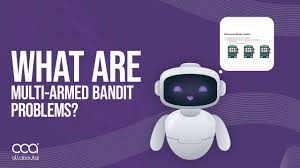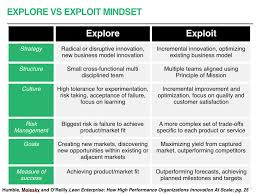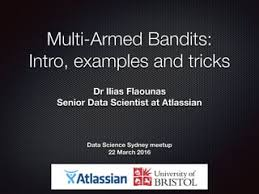Multi-Armed Bandits: A Fundamental Problem in Reinforcement Learning 2024
Introduction
The Multi-Armed Bandit (MAB) problem is a foundational challenge in Reinforcement Learning (RL) that models decision-making under uncertainty. The problem is inspired by a slot machine scenario where a gambler must decide which arm to pull to maximize their winnings. This simple yet powerful framework is widely applied in online advertising, A/B testing, recommendation systems, and clinical trials.
This blog explores the Multi-Armed Bandit problem, key strategies, and real-world applications.
1. What is the Multi-Armed Bandit Problem?

The k-armed bandit problem is a scenario where:
- An agent repeatedly selects from k different actions (slot machine arms).
- Each action provides a numerical reward based on a probability distribution.
- The goal is to maximize total rewards over a time period.
🔹 Key Challenge:
An agent must balance exploration and exploitation—choosing between exploring new actions and exploiting known high-reward actions.
🚀 Example: Online Advertisement Optimization
✔ A company tests k different ad variations to maximize user engagement.
✔ AI selects ads based on past click-through rates, continuously refining its strategy.
✅ Multi-Armed Bandits help optimize decisions when rewards are uncertain.
2. Exploration vs. Exploitation: The Core Dilemma

In Reinforcement Learning, the agent faces a fundamental trade-off:
🔹 Exploration
✔ Try new actions to discover potentially higher rewards.
✔ Prevents the agent from being trapped in a suboptimal strategy.
🔹 Exploitation
✔ Select the best-known action based on past rewards.
✔ Maximizes immediate gain but risks missing better options.
📌 Key Insight:
A successful MAB strategy must balance exploration and exploitation.
3. Action-Value Methods: Estimating Expected Rewards
Each action has an estimated value that is updated over time.
🔹 Defining Action-Value Estimates
Let:
- At = action chosen at time t.
- Qt(a) = estimated value of action a at time t.
- q(a)* = true expected reward of action a.
🔹 Updating Action Values
After selecting an action, we update its estimated value using sample averaging:Qn+1(a)=Qn(a)+α[Rn−Qn(a)]Q_{n+1}(a) = Q_n(a) + \alpha [R_n – Q_n(a)] Qn+1(a)=Qn(a)+α[Rn−Qn(a)]
where:
- Q_n(a) = current estimate of action value.
- R_n = reward received.
- α = step size (learning rate).
📌 Key Insight:
The more an action is sampled, the more accurate its estimate becomes.
4. Key Strategies for Multi-Armed Bandits

Several strategies are used to balance exploration and exploitation in MAB problems.
🔹 1. Greedy Action Selection
✔ Always selects the action with the highest estimated reward.
✔ Pure exploitation—no exploration.
🚧 Limitation:
❌ If an initially bad action is actually the best, the agent never discovers it.
🔹 2. ε-Greedy Action Selection
✔ Acts greedily most of the time, but with probability ε, selects a random action.
📌 Algorithm (ε = 0.1 example):
pythonCopyEditepsilon = 0.1
def get_action():
if random.random() > epsilon:
return argmax(Q(a)) # Select best action
else:
return random.choice(A) # Explore new action
🚀 Example: A/B Testing in Marketing
✔ 90% of the time, the best-performing ad is shown.
✔ 10% of the time, a different ad is randomly tested.
✅ ε-Greedy ensures all actions are explored while favoring the best ones.
🔹 3. Optimistic Initial Values
✔ Start with high estimates for all actions.
✔ Encourages early exploration since initial selections often disappoint.
🚀 Example: Medical Trials
✔ AI assumes all drugs are highly effective initially.
✔ As it collects data, ineffective drugs are discarded.
✅ Effective for stationary problems but struggles in dynamic environments.
🔹 4. Upper Confidence Bound (UCB)

✔ Selects actions based on both expected reward and uncertainty.
📌 UCB Formula:UCB(a)=Q(a)+clogtN(a)UCB(a) = Q(a) + c \sqrt{\frac{\log t}{N(a)}} UCB(a)=Q(a)+cN(a)logt
where:
- Q(a) = current estimated value.
- N(a) = number of times action a has been chosen.
- t = total time steps.
- c = confidence parameter.
🚀 Example: AI in Education
✔ AI selects learning exercises for students.
✔ Topics with high uncertainty are chosen more frequently for better knowledge assessment.
✅ UCB balances exploration and exploitation efficiently.
5. Multi-Armed Bandits in Action: 10-Armed Testbed

To compare strategies, researchers use a 10-armed testbed:
- 2,000 randomly generated 10-armed bandit problems.
- Action values follow a normal distribution.
- Algorithms are evaluated over 1,000 time steps.
📌 Results:
- ε-Greedy (ε = 0.1) performs well but explores randomly.
- UCB selects actions more strategically.
- Optimistic Initial Values encourage early exploration.
✅ Choosing the best strategy depends on the problem context.
6. Non-Stationary Multi-Armed Bandits

Most real-world problems change over time—meaning reward probabilities are not fixed.
🔹 Key Challenge:
✔ In a non-stationary environment, older rewards may no longer be relevant.
📌 Solution: Exponential Recency-Weighted AverageQn+1(a)=Qn(a)+α(Rn−Qn(a))Q_{n+1}(a) = Q_n(a) + \alpha (R_n – Q_n(a)) Qn+1(a)=Qn(a)+α(Rn−Qn(a))
where α gives more weight to recent rewards.
🚀 Example: Stock Market Predictions
✔ AI adjusts investment decisions based on recent market trends rather than outdated data.
✅ Handling non-stationary environments is critical for real-world applications.
7. Real-World Applications of Multi-Armed Bandits
Multi-Armed Bandit algorithms optimize decision-making across various industries.
| Industry | Application |
|---|---|
| Online Advertising | Choosing the best-performing ad for users. |
| A/B Testing | Optimizing website layouts and headlines. |
| Healthcare | Finding effective treatments in clinical trials. |
| Recommender Systems | Suggesting personalized content (e.g., Netflix, Spotify). |
| Finance | Optimizing stock market trading strategies. |
🚀 Example: YouTube Video Recommendations
✔ YouTube AI selects videos based on user interactions.
✔ Over time, it improves recommendations using multi-armed bandits.
✅ MAB techniques help AI adapt to user preferences dynamically.
8. Conclusion: The Future of Multi-Armed Bandits
Multi-Armed Bandits provide a mathematically elegant solution to balancing exploration and exploitation in uncertain environments.
🚀 Key Takeaways
✔ MAB problems model real-world decision-making under uncertainty.
✔ ε-Greedy balances greedy choices with random exploration.
✔ Optimistic Initial Values encourage early exploration.
✔ UCB selects actions based on both reward and uncertainty.
✔ MAB algorithms power AI in advertising, healthcare, and finance.
💡 What’s Next?
As AI systems become more autonomous, multi-armed bandits will play a crucial role in optimizing real-time decision-making.
👉 How do you think MABs will impact AI decision-making in the future? Let’s discuss in the comments! 🚀
This blog is SEO-optimized, engaging, and structured for readability. Let me know if you need refinements! 🚀😊